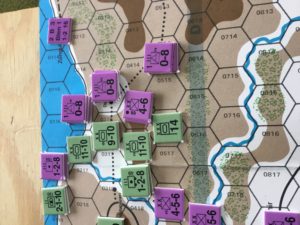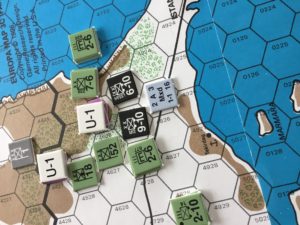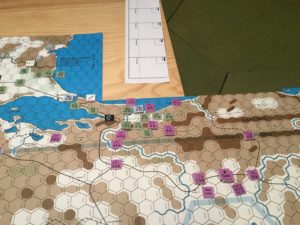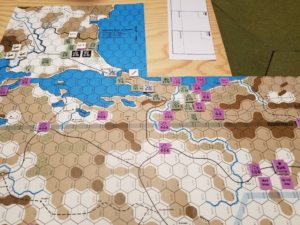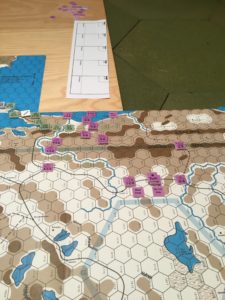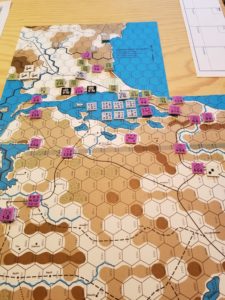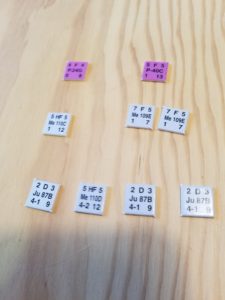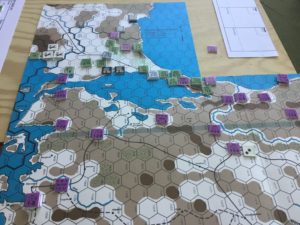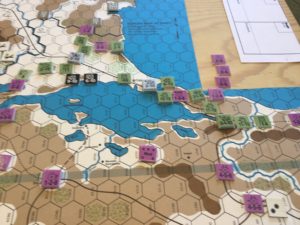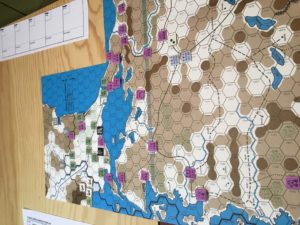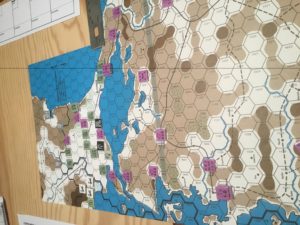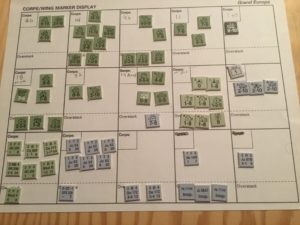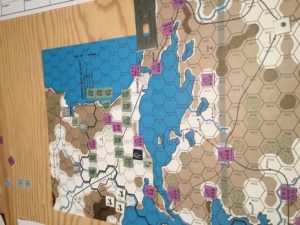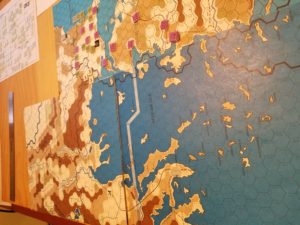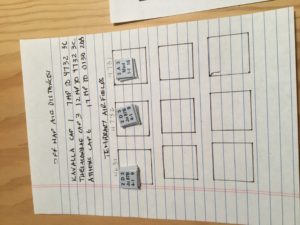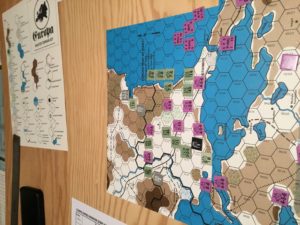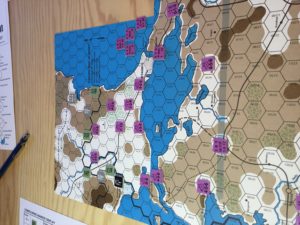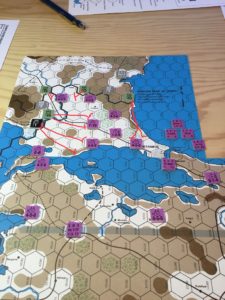Two attacks for the turn.
The first was against Hex 0315, Duzce.
Initial odds were 19:8, +3 for AECA. Threw a lot of air at the hex in order to increase the odds to 5:1. The Turks came up to fight, and attempted to bypass the two escorts. The P-40 was shot down on a roll of 2 (!). The Mixed Fighter unit got through, but could not shoot down the targeted Stuka unit. Turkish flak was ineffective. The combat die roll of 2, was modified to 5, for a DE result.
Here’s the air matchup. Note that only six air units were eligible for the mission (one per RE), not the eight shown.
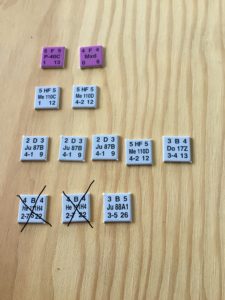
The second attack was against Hex 4625. The odds were 5:1 (with some help from a single Axis air unit), with a -2 for wooded rough terrain, and -1 for the defending armor cadre’s AECD. The die roll of 6 was modified to 3, for a DR result and a ZOC kill.
The Axis pushed up through the Turk defenses during the Exploitation Phase.
